Life insurance underwriting technology has undergone significant transformations in recent years, reshaping the landscape of the insurance industry. This evolution is driven by the integration of advanced technologies such as artificial intelligence (AI), machine learning (ML), big data analytics, and the Internet of Things (IoT). These innovations are not only enhancing the efficiency and accuracy of underwriting processes but also improving customer experiences and expanding the reach of life insurance products.
Traditionally, life insurance underwriting has been a labor-intensive and time-consuming process. It involved extensive data collection, including medical histories, lifestyle information, and financial backgrounds. Underwriters would manually assess these details to determine the risk profile of applicants and set premium rates. This process could take weeks, sometimes even months, leading to customer dissatisfaction and higher operational costs.
The advent of digital technology has revolutionized this process. AI and ML algorithms are now capable of rapidly analyzing vast amounts of data, including non-traditional sources such as online behavior, wearable device data, and even social media activity. This not only speeds up the underwriting process but also allows for a more nuanced understanding of risk.
Predictive analytics, a key component of modern underwriting technology, uses historical data to predict future outcomes. In life insurance, this means more accurate risk assessments. By analyzing patterns and correlations in large datasets, life carriers can identify risk factors that were previously unnoticed. This leads to more personalized insurance policies, where premiums are more closely aligned with the individual risk of the policyholder.
Automated underwriting systems (AUS) are another breakthrough. These systems use predefined rules and algorithms to evaluate applications. In many cases, they can approve policies instantly without human intervention. This automation not only speeds up the process but also reduces the potential for human error and bias.
The IoT and wearable technology are also playing a growing role in life insurance underwriting. Devices like fitness trackers provide real-time data on an individual’s health and lifestyle. This information can be used to offer more tailored insurance products, such as policies with incentives for maintaining a healthy lifestyle.
The integration of technology in underwriting has significantly enhanced the customer experience. The process is faster and more convenient, with many life carriers offering instant quotes and online applications. Additionally, the use of data analytics allows for more personalized policies, potentially leading to lower premiums for healthier or lower-risk individuals.
These advancements are not without challenges and ethical considerations. The use of personal data raises privacy concerns. Life carriers must navigate the fine line between leveraging data for better risk assessment and respecting individual privacy rights. Additionally, there are ethical considerations regarding data use and the potential for discrimination based on health or lifestyle data.
Swiss Re “Underwriting Ease”
The Swiss Re team has developed an underwriting visualization platform that will revolutionize the process between brokerage general agencies and carrier underwriters. I met Nanditha Nandy, SVP of Underwriting Solutions of Swiss Re, in 2023 at a LIMRA Conference. She later showed me a demo of Underwriting Ease. I was impressed because it wasn’t an underwriting workbench, yet it was a dashboard that provided all the necessary information to make it easy for an underwriter to make a decision. Dan McKinney, VP of Data Driven Underwriting at Swiss Re shared additional information about the platform. I believe this is a game changer in the industry.
Underwriting Ease enables the digital consumption and visualization of digital health data (DHD), expediting manual underwriting workflows for brokerage agencies and for carriers.
In recent years, the concept of digital health has gained significant momentum. The advent of digital health has allowed healthcare providers to deliver better patient outcomes, improve disease management, and reduce healthcare costs. The introduction of digitally generated health-related data such as medical records, biometric data, and personal health data, has opened up new opportunities across the life insurance industry ecosystem as well.
Data is one of the most valuable assets for the insurance industry. The underwriting process, which is used to assess an individual’s risk profile and determine the premiums they will pay, requires significant volumes of relevant data. Traditionally, BGAs and insurance underwriters used paper-based forms to collect information about their clients’ health history, lifestyle, and other factors. However, today, the advancements in digital technology and the ubiquity of digital health data have paved the way for a streamlined underwriting process, from initial application intake to policy issuance.
Digital health data is increasingly being used by agents and carriers to evaluate a client’s risk profile. However, the process of compiling and analyzing data and subsequently transferring that information can be time-consuming and cumbersome, requiring significant human effort. That is where the integration of digital health data into a visualizing SaaS platform comes into play.
SaaS, or software as a service, is a cloud-based model for delivering software applications over the internet. SaaS platforms can be accessed through a web browser, eliminating the need for locally installed software. The integration of digital health data into a SaaS platform can provide agents and underwriters with a clear and easy-to-understand visualization of a client’s health history and risk profile.
The benefits of integrating digital health data into a visualizing SaaS platform are many. Here are some of the advantages that can be derived for agents and carriers from this integration:
Improved efficiency: Integrating digital health data into the Underwriting Ease platform can significantly reduce the time and effort required to evaluate a client’s risk profile. Agents and underwriters can quickly and easily access relevant health-related data, reducing the need for manual data collection and analysis.
Accurate risk assessment: The use of digital health data ensures that agents and underwriters have access to a rich source of relevant data that can help them make accurate risk assessments. The use of the Underwriting Ease allows underwriters to identify patterns and correlations that might be difficult to detect otherwise, leading to more informed decisions.
Reduced costs: By eliminating the need for manual data entry, analysis, and interpretation, the integration of digital health data into Underwriting Ease can reduce the time and cost associated with finding the applicant the right carrier for their policy.
Enhanced customer experience: The use of Underwriting Ease allows agents to provide a seamless customer experience. Clients can simply provide access to their digital health records, reducing the need for invasive and time-consuming medical exams.
Increased transparency and trust: The use of Underwriting Ease in the underwriting process can increase transparency and trust between agents and carriers. Agents can see the data that underwriters are using to make decisions about their policies, leading to greater confidence in the process.
The integration of digital health data into a visualizing SaaS platform can also offer agents and carriers significant competitive advantages. By streamlining the underwriting process, agents can offer quotes and policies more quickly, improving their ability to attract and retain clients. Additionally, the use of digital health data can help agents and carriers identify potential health risks and offer personalized health and wellness programs to their clients. However, the integration poses a challenge–the development and deployment of robust data analysis and visualization tools. To derive meaningful insights from digital health data, carriers must have the right tools and expertise to analyze data effectively. Carriers that lack sophisticated data analysis capabilities may struggle to take full advantage of the opportunities offered by digital health data.
To address that challenge, Underwriting Ease seamlessly connects via API or embeds into existing underwriting workflows and works with any automated underwriting engine and underwriting manual. It was designed by underwriters, for underwriters, to help the industry to take a technological step forward without radically changing the fundamentals of underwriting. A confluence of the data that matters, delivered in a focused, user-friendly visualizer that has already normalized and simplified the data. It is a single page view of all the available underwriting data disclosed by type and source. Allowing the underwriter to drill into the information needed to assess the risk. Empowering and enabling the agent and underwriters, while delivering cost savings by reducing manual UW efforts by 50 percent.* Additionally, the reduced per case review will help to address any backload of cases that manual underwriting has caused in light of the current industry wide UW shortage.
The integration of digital health data through the Ease platform has the potential to transform the underwriting process for life insurance. By streamlining the process and providing agents and carriers with valuable insights, Underwriting Ease can help life carriers improve risk assessment, reduce costs, and provide a better customer experience.
An industry leader in the underwriting innovation space, Swiss Re and its team of subject-matter experts continue to advance its underwriting capabilities. Through research and analytics, we aim to advance the capabilities of underwriting shops with speed and increased cost efficiencies. Swiss Re can help carriers and clients in developing and implementing these capabilities. Learn more about Swiss Re Underwriting Ease by visiting https://www.swissre.com/reinsurance/life-and-health/solutions/underwriting-ease.html.
Life insurance underwriting technology is at a pivotal point. The integration of AI, ML, big data, and IoT is transforming the industry, making underwriting more efficient, accurate, and customer friendly. As the technology continues to evolve, it promises to further refine risk assessment and policy customization, benefiting life carriers, policyholders, and insurance advisors.

















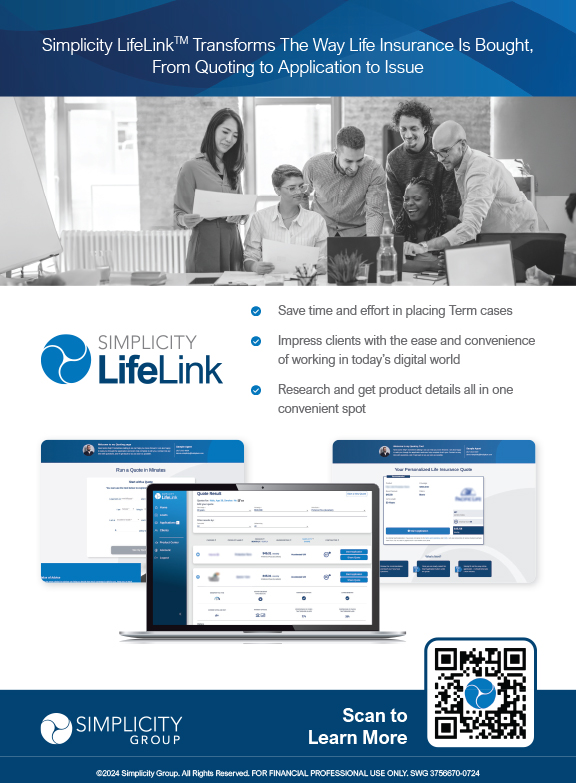

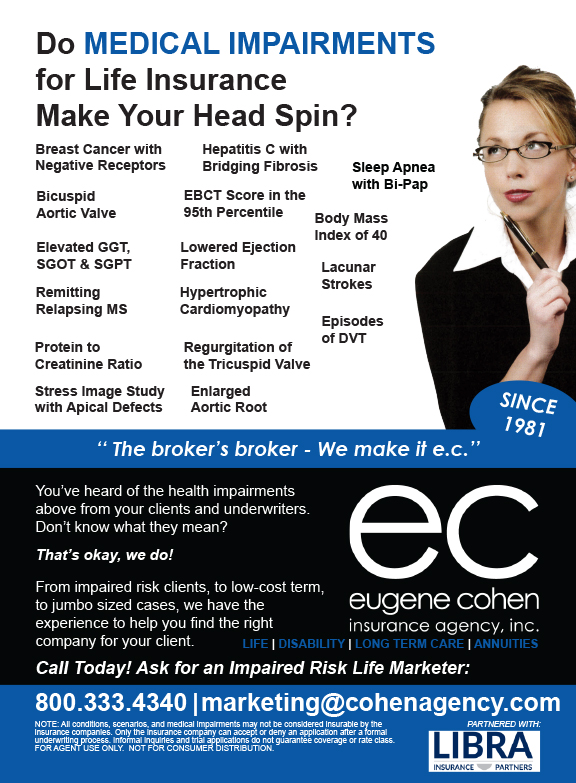







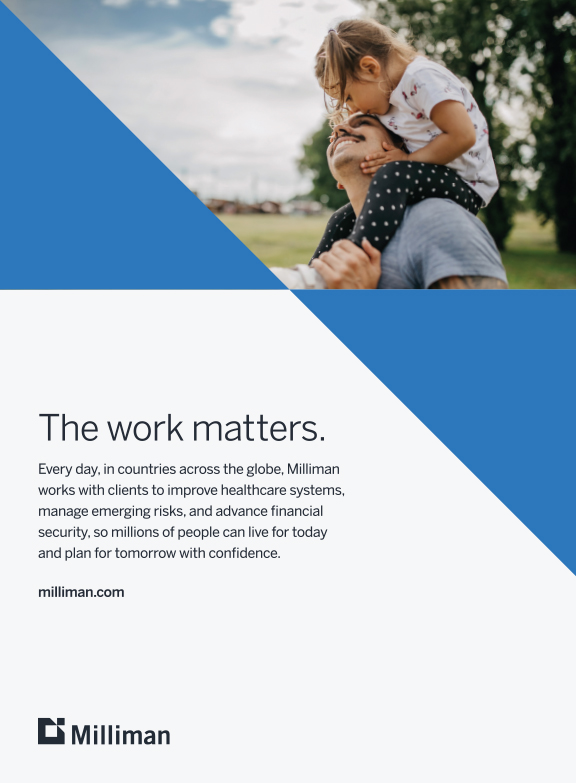



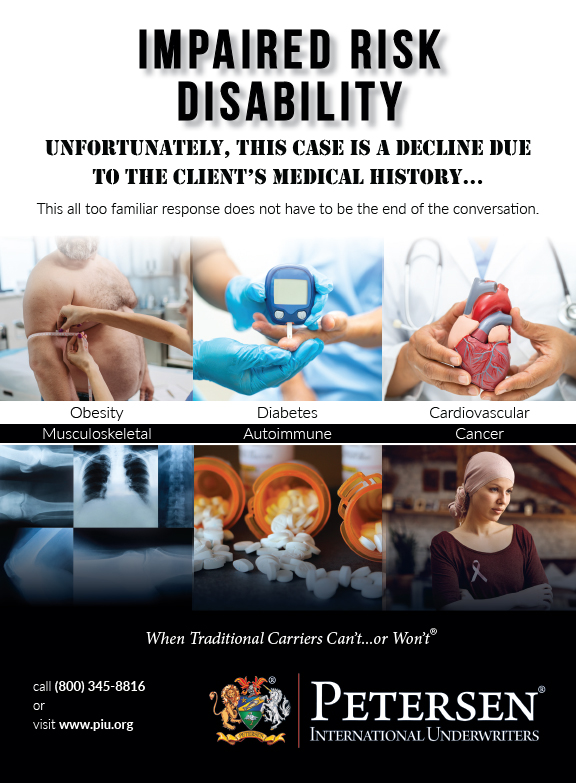
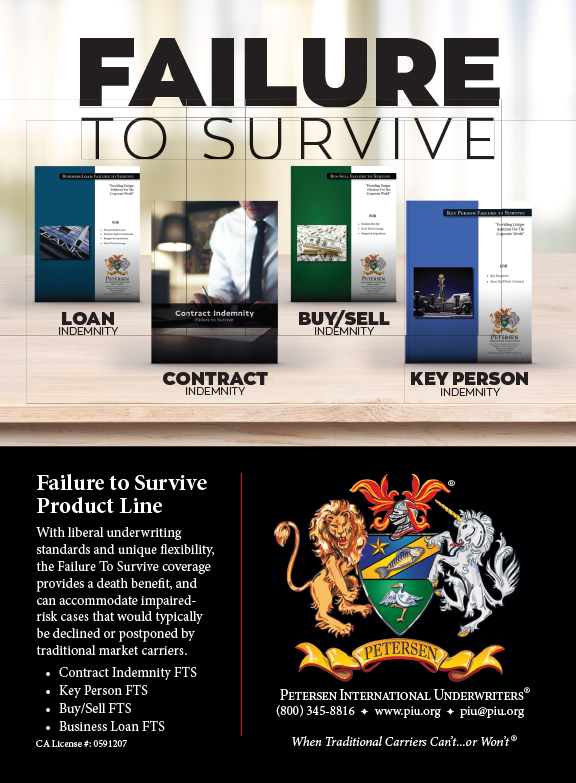
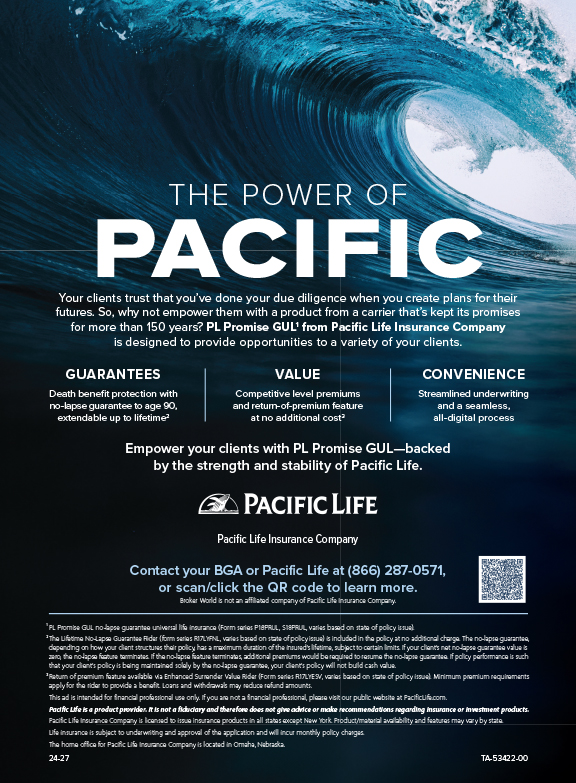

The Evolution Of Life Insurance: Embracing Digital Point Of Sales Solutions For A Millennial Market
In the ever-evolving landscape of life insurance digital point of sales solutions are not just a trend but a revolution, particularly tailored to the preferences and needs of millennials—the central buyers in today’s market. This demographic, aged between 26-45, is driving a significant shift in how life insurance products are designed, marketed and sold. The key to capturing this market lies in blending self-service options with on-demand advisor support, accelerated underwriting processes, and leveraging cutting-edge AI technology.
The Afficiency Model
The move to digitization has been embraced by our industry for some time, with carriers vying to meet the needs of both tech savvy consumers and distribution partners anxious to move with the times. However, it has not always been a smooth ride. For many carriers the transition has been a long and winding road, oftentimes a road that cannot be navigated alone. Some successful life carriers have benefited from leaning on the expertise and nimbleness of the new breed of life insurtechs.
One such insurtech, Afficiency, has the unique advantage of an innovative tech stack combined with a team of talented individuals with a proven track record in digital life insurance deployments.
Understanding the importance of the agent-client relationship and the valued role that the agent plays, Afficiency has always focused their attention on a distributor-first model to deliver a true digital workflow for term, final expense and whole life products with offer rates close to 70 percent and increasing with continued underwriting innovation. These products, along with more advanced products in the pipeline, provide agents and consumers alike with an in-session decision; at times the end-to-end journey is complete in under 10 to 15 minutes. This represents a windfall for agents and carriers looking for high quality risk and keen to expand their business, especially among younger digital natives.
The Afficiency model is based on collaboration between all parties; technology, carriers, and distribution to deliver digital products that address parties’ desire to be in control of their costs and to utilize a scalable platform.
Most recently Afficiency has released the latest version of their eApp, which relies on proprietary API technology and an easy-to-navigate and configurable UI, to bridge agent experience, third party database checks and carrier connections. Guided by the agent, the client is walked through the application to collect and verify their personal data, capture eligibility, health, and lifestyle information before gaining consent via either email or text message. Once consent is provided, the real-time magic happens in the background as the sophisticated underwriting engine kicks into action simultaneously conducting applicant identification checks, implementing fraud controls, and returning a decision while the agent and client patiently standby for an in-session decision in a matter of minutes—and often a decision is returned in seconds.
Should the application proceed to an offer the agent continues the digital journey with their client, adjusting the term and coverage as needed as well as adding additional benefits such as children’s term riders or accidental death benefit rider. The client signature is captured, once again digitally via either email or text message. The client can have the financial protection they need within minutes and the agent has the added security of competitive, next-day commission payment.
Afficiency works with their carrier partners to continuously improve and fine tune the interpretation of the underwriting rules to maximize the outcome for carriers and distributors alike. Such fine tuning includes the recent introduction of a manual underwriting process to the once “fully automatic” workflow. While the overwhelming majority of applications are still decided digitally and within the same session, the refer to underwriter process allows for manual review of edge cases that may have otherwise been declined within 48 hours, further increasing the number of cases being approved.
Another recent enhancement to the Afficiency client journey is the introduction of an underwriting report on declined applications for the information of both the agent and their client. Historically agents have had to make do with the scant and sometimes unhelpful information provided on adverse underwriting decision notifications. By providing more detail on why their client was declined, the agent is armed with meaningful insight and can better advise their client on the most appropriate next steps for protecting their financial future.
In the end it’s about growing the number of families we can help distributors and carriers protect! To learn more about Afficiency visit https://www.afficiency.com.
The Millennial Influence
Millennials, known for their affinity for technology and convenience, have reshaped the life insurance industry. Their demand for quick, efficient, and hassle-free services has led to the emergence of digital point of sales solutions. Unlike previous generations, millennials are willing to pay higher premiums for life insurance policies that offer speed and simplicity—a testament to the adage “time is money.” The process has become as important as the product itself, with instant issue policies and accelerated underwriting processes gaining popularity.
Speed and efficiency is the new currency. In the realm of life insurance, “time is money” has never been more pertinent. The quicker the process of obtaining life insurance, the more attractive it is to potential buyers. Millennials, in particular, are willing to pay higher premiums for policies that offer speed and convenience. This trend has led to the concept that the process itself has become the product, a significant departure from traditional insurance models.
The Rise of Non-Medical Underwriting
One of the most significant advancements in catering to this need for speed and convenience is the development of non-medical underwriting, often referred to as “Non-Med.” This approach eliminates the traditional, time-consuming medical exams and fluid draws, relying instead on part II medical questionnaires, prescription data, Medical Information Bureau (MIB) checks, and Electronic Health Records (EHRs). This shift not only speeds up the underwriting process but also makes it more comfortable and less invasive for the customer.
AI: The Game Changer in Underwriting
Insurtech companies are at the forefront of integrating artificial intelligence (AI) into the underwriting process. By utilizing AI, these companies can quickly analyze vast amounts of data from medical questionnaires, prescription histories, and electronic health records. This technology enables insurers to accurately score and make informed decisions on policy applications at an unprecedented speed. The result is a more efficient underwriting process, leading to higher customer satisfaction and increased business placement.
The life insurance industry is undergoing a transformative phase, driven by the demands of the millennial generation. The integration of digital point of sales solutions, non-medical underwriting processes, and AI-driven technologies reflects a broader trend towards convenience, speed, and customer-centricity. As digital agencies continue to emerge and evolve, they are setting new standards in the life insurance market, making the process of buying life insurance more accessible, efficient, and appealing to a generation that values both time and technology. The future of life insurance is digital, and it is unfolding now.